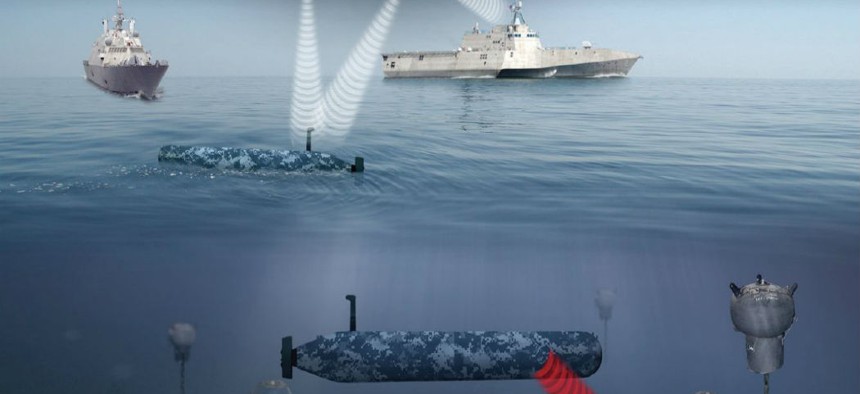Navy Knifefish undersea drone finds mines in test
Knifefish uses synthetic aperture sonar to find enemy mines in high-clutter environments.
The Navy’s Knifefish underwater mine hunting drone recently helped identify and destroy a number of targets in a key test of the system’s development, service officials said.
During a recent assessment in Narragansett Bay, R.I., the 21-foot Unmanned Underwater Vehicle (UUV) used low-frequency broadband synthetic aperture sonar to find stealthy undersea mine targets, said Capt. Jon Rucker, program manager, Unmanned Maritime Systems, PEO LCS.
“We put eight targets down across a range. The vehicle went around to detect the targets,” Rucker explained.
The Knifefish drone allows a manned surface ship to remain at a safe distance away from risk of mine explosions while the drone searches for and finds floating and buried mines in high-clutter environments. The drone also gathers environmental data to provide intelligence support.
While initially planned for the Navy’s Littoral Combat Ship, Rucker explained that Knifefish is engineered to operate from any surface ship. The drone is part of a multi-pronged plan to replace the Navy’s Remote Minehunting System, or RMS. The Navy effort includes transitioning from the RMS to a mine-searching surface ship and then to the Knifefish UUV.
Rucker explained that the Knifefish exceeded expectations finding six of the eight mines during the test, and that the Navy is still working on a timing improvement with some of the drone’s software.
Synthetic aperture sonar sends an acoustic ping forward before analyzing the return signal to obtain shape, size and distance of enemy targets; data from the UUV is downloaded from a Removable Data Storage Module for shipboard, analysis, according to information from its manufacturer General Dynamics Mission Systems.
Knifefish is slated to be operational sometime later this year.
NEXT STORY: Army integrates new WIN-T software interface




